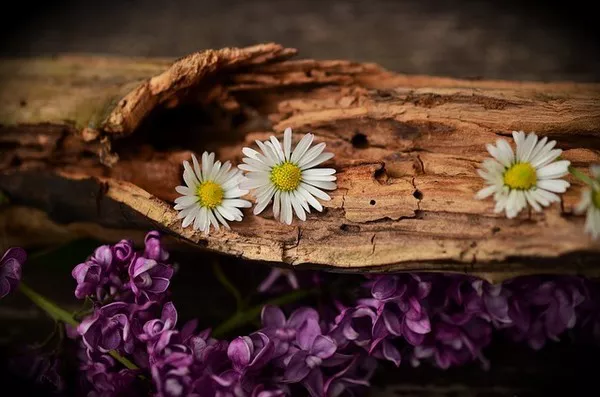Since ancient times, certain flowers have been infused with myth and lore as vessels for wishes, becoming integral parts of rituals and celebrations across cultures. Typically blossoming in late summer and fall, these plants send their tiny airborne seeds out into the world, inspiring traditions of blowing wishes upon their delicate petals. What are these magical, wish-bearing flowers called? Let’s explore some of the most renowned wishing blooms and the folklore behind them.
Dandelions: A Childhood Wish Flower
The common dandelion is likely the flower most associated with wishing traditions. As children, many of us can remember closing our eyes tight, holding a dandelion puffball stem beneath our chin, and blowing with all our might to send the tiny seeds flying through the air. We’d then open our eyes to see if any seeds still clung to the stem, indicating a wish yet to be fulfilled.
This beloved ritual stems from the dandelion’s delicate round seed head, called a “clock” or “wish ball.” Each mature head holds up to 200 individual fruits, each carrying a tiny seed that waits to be carried off by the wind. To disperse their seeds more effectively, dandelion clocks are designed to release all their seeds with the slightest breath of air – making them ideal for wish-making.
In some folklore, the small individual puffs of dandelion seeds represent units of time. If several puffs detach at once when blown, it means your wish will come true quickly. If seeds remain, your wish will take longer to realize. Dandelions’ association with wishes and time has led to poetic nicknames like “shepherd’s clock” and “wishing weed.” Their fluffy globes full of winged seeds offer a perfect vessel for entrusting your dreams to nature’s breath and winds of change.
Four-Leaf Clovers: Harbingers of Luck
Another plant cloaked in wishful myth is the lucky four-leaf clover. Worldwide, the rare chance finding of a four-leaf variety among a patch of its abundant three-leaf cousins has fueled associations with fortune, magic, and wishes coming true. Some Celtic legends tied the clovers’ leaves to earth, water, fire and air, granting power over these elements. Other tales link the fourth leaf to Adam and Eve, with its luck tying back to the Garden of Eden. Still other stories connect the leaves to represent faith, hope, love, and luck – four enduring human virtues.
Regardless of their exact origin, four-leaf clovers carry a universal mystique. Finding one in a field of ordinary three-leaf clovers feels like discovering a natural treasure, one that just might have the power to make wishes come true. People who stumble upon four-leaf clovers traditionally press and preserve them for good fortune. Many hold onto these rare botanical finds as tangible charms to call upon Dame Fortune to fulfill their deepest desires.
Eyelash Wishes: A Symbol of Longing
More delicate than any flower, a single fallen eyelash has its own tradition of wish making. When a stray lash comes loose and drops from your eye, you can place the lash on your fingertip and make a silent wish before blowing it away. The fragile eyelash whisked off into the unknown symbolizes your wish going out into the universe. Some versions suggest keeping the lash on your cheek, then blowing it away to spread the wish.
This quirky folk custom may have pagan origins relating eyelashes to spirits, or tie back to old superstitions around witchcraft. But the main symbolism lies in using the eyelash, which grows anew each day, as a stand-in for your heart’s greatest desires manifested in the wish. Seeing your cherished wish literally carried off activates a sense of optimistic possibility. And if the eyelash should happen to stick to your finger even after blowing, tradition says your wish will indeed come true.
Floating Paper Flowers: Messages Sent Downstream
In many Asian cultures, paper flowers carefully folded from thin sheets carry wishes sent off on natural waters. Origami lotus blossoms, lilies, and blooms in other symbolic shapes get floated down rivers and streams, often with candles lit inside. This ritual sends prayers and hopes symbolically down the water’s path.
The flowing watercourse carries the flowers’ wishes onward toward their fulfillment. Candles lit within the paper blooms represent inner light guiding the quest. Different cultures use flower floats to mark annual festivals, send wishes to lost loved ones, pray for harmony, and give thanks for one’s desires. Casting these fragile paper florals upon moving waters offers a cathartic release, surrendering your dreams to nature’s movement and the season’s flow.
Conclusion
No matter its exact form, the act of wish-making upon flowers’ winged seeds, rare leaves, or floating petals is universally symbolic. It lays bare human longing, optimism, and faith in unseen powers. Wishes entrusted gently to the wind and water enable people to let go, planting hope into nature’s care. This ancient, cross-cultural ritual practice endures as testament to flowers’ transcendent ability to hold human dreams.


